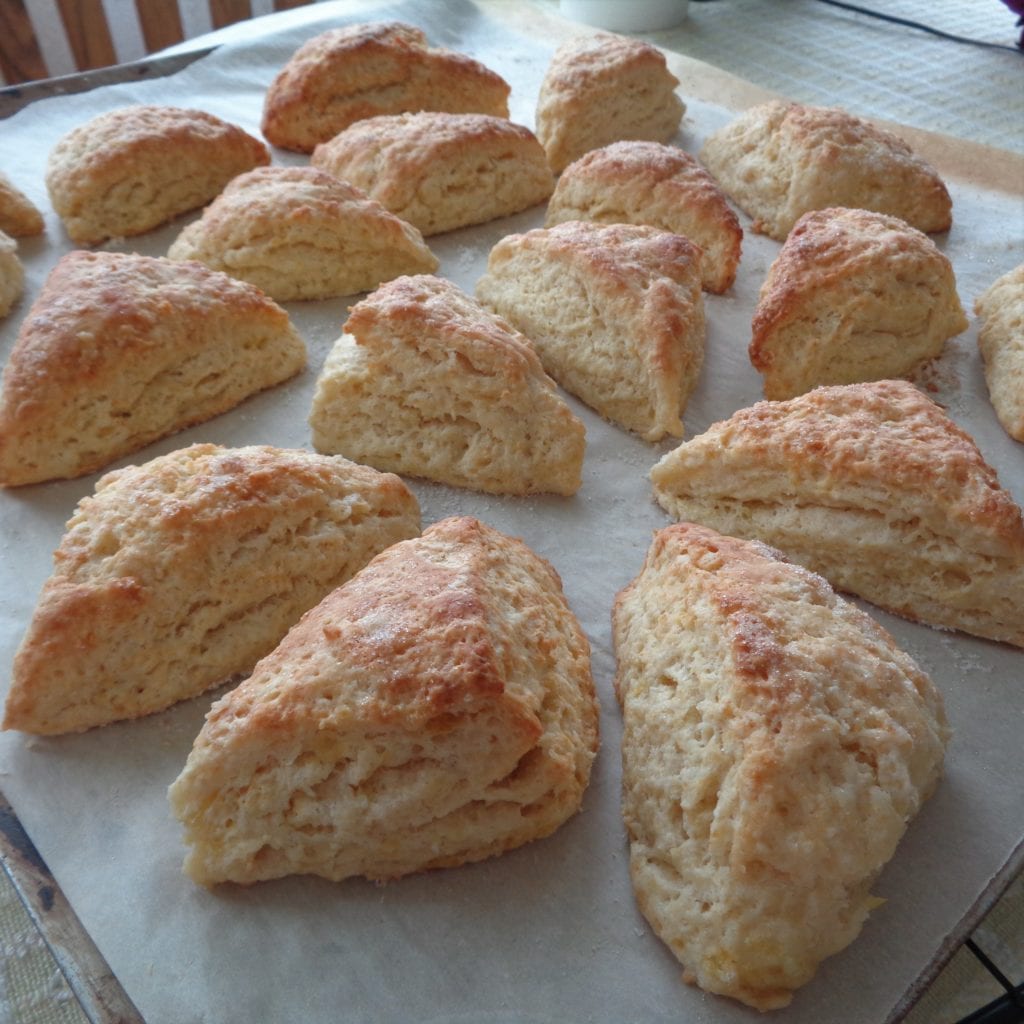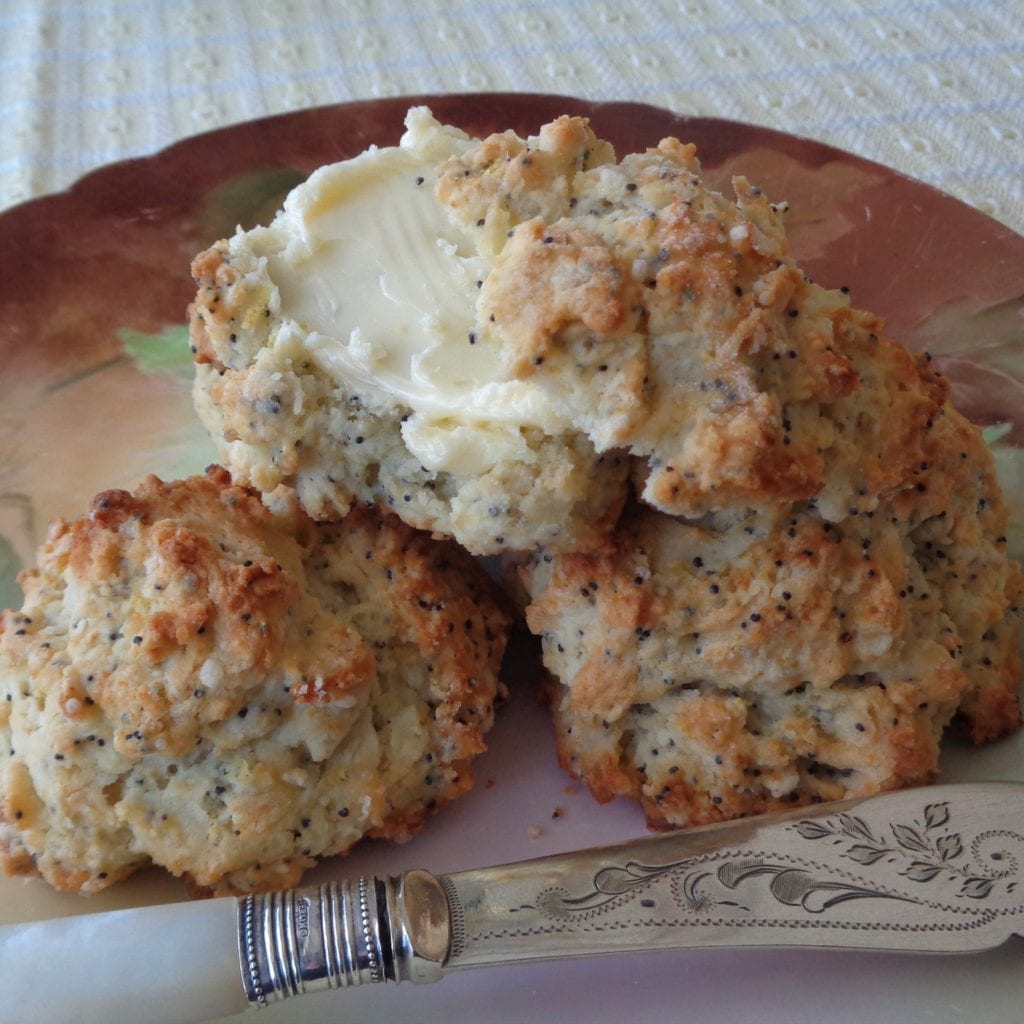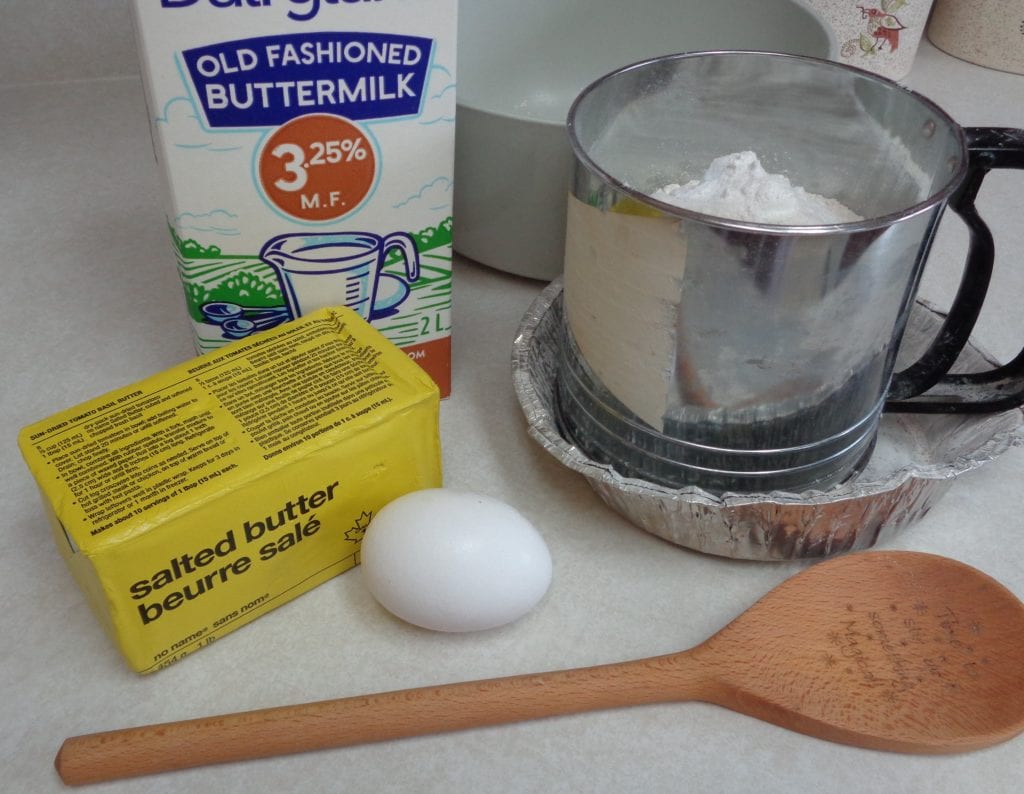
2 1/2 cups white flour
2 Tbsp. sugar
2 1/2 tsp. baking powder
1/2 tsp. baking soda
1/2 cup butter, at room temperature
1 cup buttermilk
1 egg
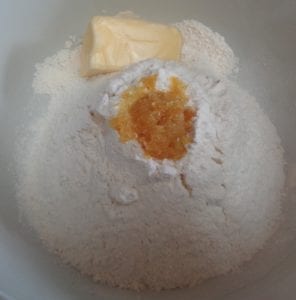 Preheat oven to 400 degrees F. Place a sheet or parchment paper on a cookie rack and set aside.
Preheat oven to 400 degrees F. Place a sheet or parchment paper on a cookie rack and set aside.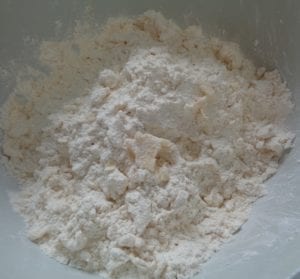 So after I was finished doing it my way, he showed me his and I have not looked back when it comes to pastry, biscuits and scones.
So after I was finished doing it my way, he showed me his and I have not looked back when it comes to pastry, biscuits and scones.
The skill that needs practice is to not overwork the butter. The point, using your hands, is to crumble the butter into small pea size pieces that are covered in flour.
With the butter at room temperature this will happen quickly as it will break down easily. Too much working and the flakiness will disappear and the scones will not rise nicely.
Choose the method that works best for you but I would encourage you to try working quickly and gently with room temperature butter.
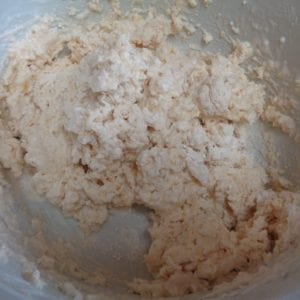 Combine the buttermilk and egg then pour over the flour mixture.
Combine the buttermilk and egg then pour over the flour mixture.
Stir until just moistened. It will looked ragged and that is alright. It will also be very loose and soft.
Flour your hands and the counter, then turn out the dough and press it together into a patty.
Gently knead the dough 8 – 10 times, keeping all surfaces floured so that nothing sticks and the dough stays together.
Pat into a square about one inch thick and then into nine smaller square.
Cut each square diagonally into a triangle. You will have 18 scones.
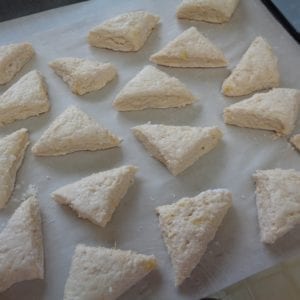 Sprinkle with a coarse/raw sugar and bake 14 to 17 minutes.
Sprinkle with a coarse/raw sugar and bake 14 to 17 minutes.
It is also possible to make larger scones that will need 3 – 4 more minutes to bake. In this house though there are not a lot of big appetites anymore.
Transfer to a cooling rack once golden and let cool.
Another option would be to simply scoop the batter from the bowl and neatly place it on the prepared cookie sheet.
That is how the lemon poppy seed scones were made in the picture below.
Two tablespoons of ground poppy seed and 1 tablespoon of fresh lemon juice were added to the dough.
These scones will freeze nicely. When individually wrapped they can go directly into a lunch bag and be good to go by morning coffee break.
More traditional scone shape above and scooped option below.
Lemon Buttermilk Scones from My Kitchen Wand


